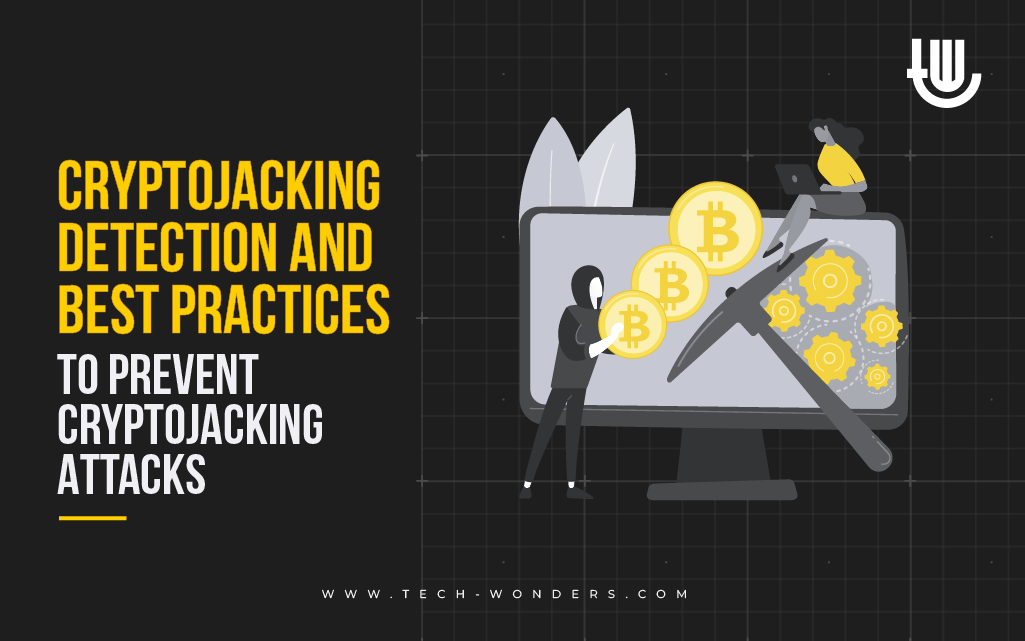
For the past few years, since the rise of cryptocurrency and decentralized ledgers, hackers have been known to attempt mining on such currencies through malicious pieces of code. Many people must have heard the terms cryptojacking and mining together. But to those who don’t know about it, let’s dive into it.
Cryptocurrency Mining
To understand what cryptojacking is, we’ll first delve into the concept of cryptocurrency mining.
Every transaction in the cryptocurrency realm is protected with a hash. Imagine this hash to be mathematical puzzle a computer must solve. A computer has to run millions of codes every second to be able to decode this puzzle. To add to this, thousands of computers over the globe run cryptocurrency mining everyday to solve this hash, which is termed as mining. And once mined, the miner gets bitcoin and other rewards.
However, running more than a million processes every second to guess the correct hash requires immense computational power of the device. It also adds up the electricity cost on which it will essentially run. Mining a bitcoin takes anywhere between 10 minutes to 30 days to solve one hash. Such computers are called nodes, and correctly guessing a transactional hash value will lead the miner to the next block to decode.
The more the decoding, the more the reward, thus putting the device and the operator on a constant loop of operations.
How Does Cryptojacking Fit Into the Picture?
Cryptojacking is the method through which hackers mine cryptocurrency by utilizing a victim’s resources, such as the device and power. This is conducted in an incredibly stealthy manner and without the consent of the victim. When a hacker installs a crypto mining code snippet into the victim’s device, the mining process will start running in the background, unbeknownst to the device owner.
Usually, such code snippets are inserted in two ways: through malware and infected web browsers.
Hackers who want to conduct a crypto-jacking attack will lure the victims into downloading software that runs mining processes in the background. The software is embedded in fake applications or freely available third-party applications coming from not-so-legitimate websites.
Also, the hacker might also try to send malicious files containing crypto malware through phishing emails. Once opened and executed, these files trigger the mining process while appearing normal in the front end.
Certain websites are encoded with crypto-jacking scripts. The script starts loading in the background when a user visits the website.
Cryptojacking Detection
When infected with the cryptojacking attack, users can typically see the following indications that can make them sure of some suspicious activity going on in the background:
Increased Power Consumption
Since the infected device has mining processes constantly running in the background, the victims can detect a crypto-jacking attack when there’s an absurd surge in electricity bills, even when everything is surprisingly normal.
Device Slowing Down
The device shows many weird effects that can’t be easily missed. If one has to detect the cryptojacking attack, then the device runs immensely slow and overheats frequently. For simple functioning of the device, the CPU task manager shows a steep spike in memory usage, and most of the simple tasks would fail to operate.
Best Practices to Prevent Cryptojacking Attacks
Now that we have understood what is a cryptojacking attack, lets understand ways to mitigate and stay safe from them:
Mindful Website Surfing
Be aware of the websites you surf since they might contain crypto-mining scripts. Such websites are spread on a large scale, targeting unsuspecting users who can not differentiate between legitimate and fake websites.
For website scripts that mine currency while users surf it, one must be careful while clicking on ads and pop-ups. Mindfulness of the website being surfed, whether legitimate or not, can also help.
Act On Suspicious Activities
Identify the anomalies by referring to the detection methods mentioned above. Suppose you can see overused CPU statistics even for minimal operations, resulting in overheating and slowing down. In that case, it is quite possible to have a cryptojacking infection.
Install Robust Detection Solutions
Enable robust tools and software to detect Cryptojacker malware in the system. Modern-day solutions can detect such files that are hazardous to the devices and alert the users, alongside taking actions to mitigate them.
Safe Browsing Tips
Using browsers that can automatically detect and block surfing from websites that run cryptojacking scripts should be opted for. Privacy-focused extensions should be installed while surfing, some notable examples being minerBlock, No Coin, and Anti Miner.
On a Final Note
Here, we conclude the article on cryptojacking detection and best practices to prevent cryptojacking attacks. There has been a steep surge in hackers trying to introduce new methods to bypass robust detection systems. Therefore, before wrapping up, one advice for our readers is to watch out for criminals’ latest techniques. It is also essential to take proper precautions and safeguard from such attacks.
Scan the devices regularly and quarantine such files that indicate possible malware infection. Let us know what you think in the comments below.

Author Bio: This article has been written by Rishika Desai, B.Tech Computer Engineering graduate with 9.57 CGPA from Vishwakarma Institute of Information Technology (VIIT), Pune. Currently works as Cyber Threat Researcher at CloudSEK. She is a good dancer, poet and a writer. Animal love engulfs her heart and content writing comprises her present. You can follow Rishika on Twitter at @ich_rish99.